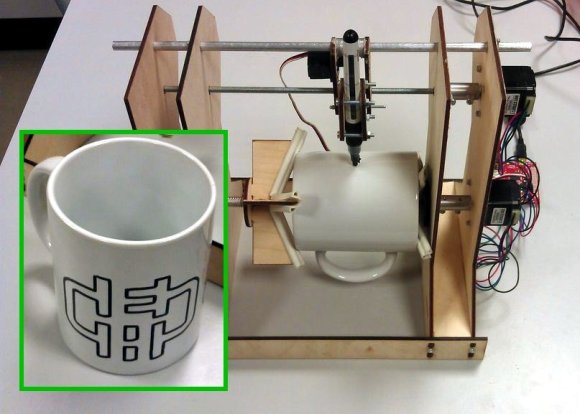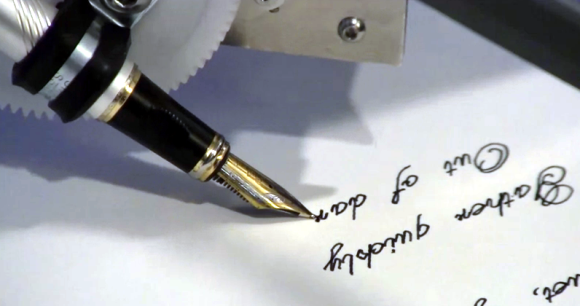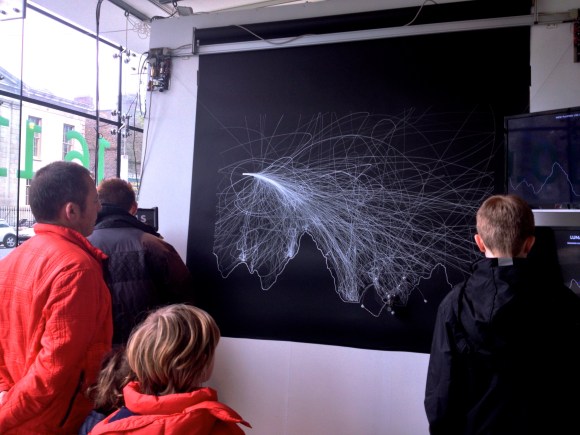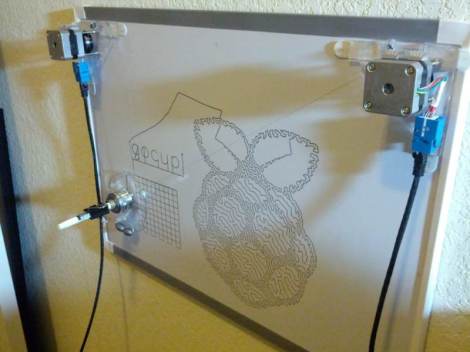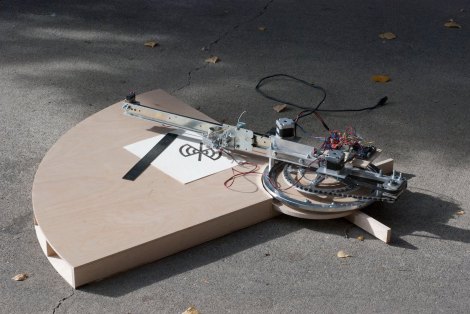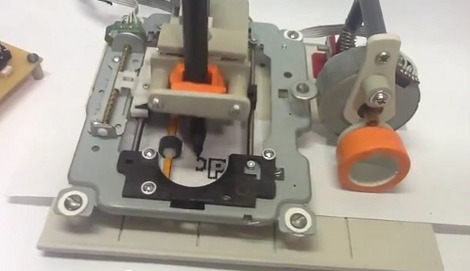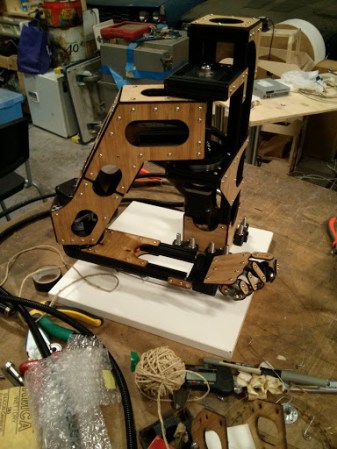
Check out this robot arm capable of handwriting which is orders of magnitude clearer than our own. It was built by [Patrick Barnes] as contract work for a campaign to raise funding for research into Duchenne Muscular Dystrophy.
Don’t miss the video after the break which starts off with the satisfying whine of some serious stepper motors. Judging scale from this image is a bit tough, but [Patrick] tells us that the entire assembly stands almost fourteen inches tall and the arm has a reach of around twenty inches. The demonstration shows off it’s abilities by drawing a Hilbert Curve. From watching the action you’ll realize that, though this arm and hand look fantastic, this is really a SCARA plotter. The wrist and fingers are for looks only, providing a place where the felt-tipped pen can be mounted (held flush to the paper with a rubber band). Whether that’s a disappointment or not, the precision and look of the machine bring it very high marks. It could take a bit of a lesson in penmanship from another we’ve seen though.
Continue reading “Handwriting Robot Arm Is A Little Stiff-wristed”

